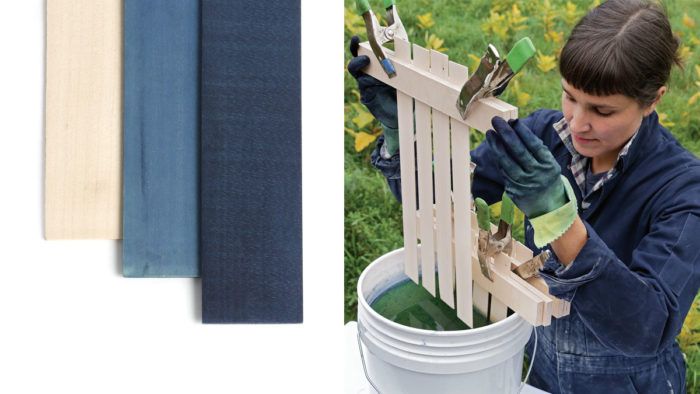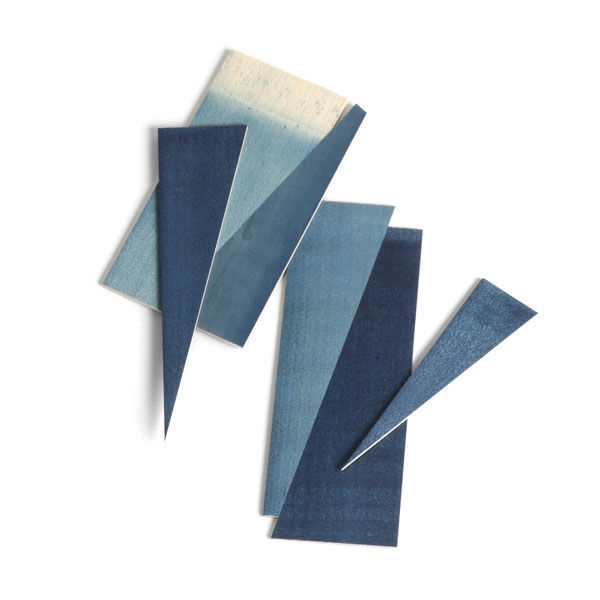How to Dye Wood with Indigo
Heide Martin uses a vat-dying technique with its roots in fabric dying to give vibrant indigo color to her furniture.

Synopsis: Heide Martin uses a vat-dying technique with its roots in fabric dying to give vibrant indigo color to her tray table. First, she creates a highly concentrated dye solution, called a mother, and then uses that solution to make the vat. After preparing the workpieces by raising the grain, she begins dipping them. This is a companion piece to Indigo Tray Table in this issue.
When I decided that I wanted to achieve a true indigo color for a table I was making, I quickly realized that aniline dyes would not give me the richness and tonal variety I was looking for. I decided to explore traditional indigo vat dyeing techniques, long used to give brilliant color to wool, silk, and linen. But I found precious little information on how to transfer these processes to wood.
Through trial and error, help from The Modern Natural Dyer by Kristine Vejar (Harry N. Abrams, 2015), emails with woodworkers who have tried similar experiments, and a lot of Internet research, I achieved a vat-dyed color with all the depth, vibrancy, and variety I had hoped for, all for around $100 in supplies.
Video: Ebonizing Oak with Steel Wool and Vinegar
Create a dark, graphic look that emphasizes
the form of a piece
Select and prep the wood

Vat dyeing wood can be risky. It will raise the grain, may cause warping on thin pieces, and requires a vat large enough for immersion (in my case a 5-gal. bucket).
The pigment does not penetrate very deeply, so machining and sanding after dying can be difficult or off limits. Soft hardwoods, such as poplar and English sycamore, work best. Denser hardwoods, such as ash and maple, do not absorb the dye as readily.
Prepare your materials by sanding up to 220 grit. Then wet them to raise the grain and sand again with 220. Do this at least twice, removing the dust with a dry rag or compressed air.

From Fine Woodworking #276
To view the entire article, please click the View PDF button below.
More on FineWoodworking.com:
- Old-Fashioned Wood-Coloring – Reviving the dyes of yore
By George Frank #66–Sept/Oct 1987 Issue - The Hows and Whys of Dyes
By Peter Gedrys #217–Jan/Feb 2011 Issue - Finish Line: Try a bleached finish
By Michael Robbins #263-Sep/Oct 2017 Issue
Fine Woodworking Recommended Products

Osmo Polyx-Oil

Diablo ‘SandNet’ Sanding Discs

Waterlox Original








Comments are closed.